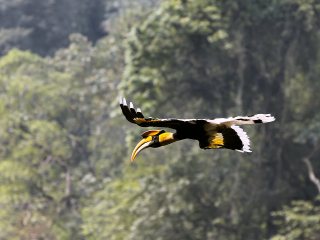
Niel Fox Photo – Great Hornbill
In the months leading up to our mahseer exploratory fly fishing trip to the rivers of southern Bhutan, Jon Miceler explained his idea of using fly fishing and other types of river based tourism as a way of generating sustainable financing to one of Bhutan’s most important but neglected nature reserves known as Royal Manas National Park. Royal Manas is unique in Bhutan in that it is contiguous with India’s oldest flagship nature reserves known simply as Manas created over 100 years ago. Important wildlife such as tiger, rhino, elephant wander back and forth from India to Bhutan making the complex one of the most important wildlife reserves in South Asia.
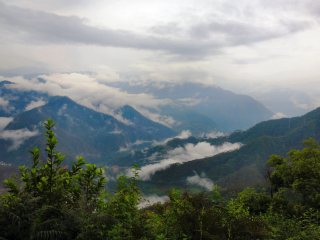 His suspicion was that mahseer and other important fish species also use the Manas River which flows from Bhutan Manas into Indian Manas as an important migration corridor. The problem is that both parks are virtually broke and increasingly threatened by poachers and encroachment by landless poor. In Bhutan, tourism is one solution that can eventually help support the park.
His suspicion was that mahseer and other important fish species also use the Manas River which flows from Bhutan Manas into Indian Manas as an important migration corridor. The problem is that both parks are virtually broke and increasingly threatened by poachers and encroachment by landless poor. In Bhutan, tourism is one solution that can eventually help support the park.
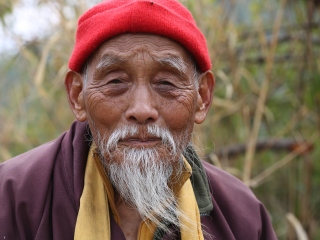
Niel Fox photo
Jon explained that Bhutan’s traditional tourism packages focused on 2-3 standard sightseeing circuits in northern Bhutan that catered to older tourists interested in visiting monasteries and temples. As tourism becomes an increasingly important source of revenue and jobs in Bhutan, there is an acute need for diversification of tourism offerings. Jon knew that fly fishing, rafting, wildlife safaris and the remote tribal cultures of south eastern Bhutan are completely untapped tourism resources which if sustainably harnessed could provide livelihoods for local communities around Royal Manas National Park as well as income for the park itself.
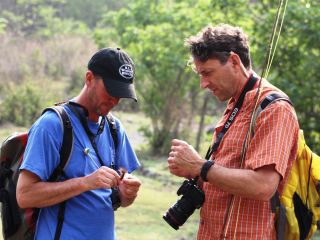 Dawes and I are here to help Jon, World Wildlife Fund (WWF) and the Government of Bhutan figure out what the possibilities of high-end, catch and release mahseer fly fishing actually are. Jon’s hope is that if mahseer are abundant enough, WWF and private sector partners could train local communities around Royal Manas National Park as well as staff from the park to offer ecotourism packages which benefit both the communities and the park.
Dawes and I are here to help Jon, World Wildlife Fund (WWF) and the Government of Bhutan figure out what the possibilities of high-end, catch and release mahseer fly fishing actually are. Jon’s hope is that if mahseer are abundant enough, WWF and private sector partners could train local communities around Royal Manas National Park as well as staff from the park to offer ecotourism packages which benefit both the communities and the park.
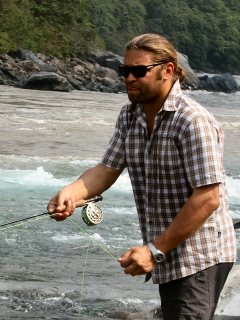 Before I go any further I must introduce Niel Fox from England. Niel is a friend of Jon Miceler, an expert on high-end (I mean HIGH END) tourism and is also consulting about the fishing and tourism here in Bhutan. Niel is the owner and founder of Based on a True story. His business is no less than incredible and you must get on to his website to believe it. Once there you’ll see some of the most fantastic photography. Niel has an eye that few photographers do and I suspect many of the top photos you see the next week will be his.
Before I go any further I must introduce Niel Fox from England. Niel is a friend of Jon Miceler, an expert on high-end (I mean HIGH END) tourism and is also consulting about the fishing and tourism here in Bhutan. Niel is the owner and founder of Based on a True story. His business is no less than incredible and you must get on to his website to believe it. Once there you’ll see some of the most fantastic photography. Niel has an eye that few photographers do and I suspect many of the top photos you see the next week will be his.
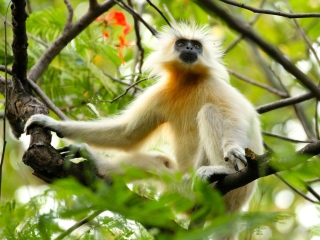 After our short yet successful mahseer fishing stop yesterday we were more determined than ever to get started this morning. We left the small town of Pangkha promptly at 5:30 to the waking of the jungle and a rare look at some golden langurs.
After our short yet successful mahseer fishing stop yesterday we were more determined than ever to get started this morning. We left the small town of Pangkha promptly at 5:30 to the waking of the jungle and a rare look at some golden langurs.
We had intentions of reaching Royal Manas National Park at 9 for breakfast. In Manas the plan was to pick up rafts and our local crew to join us on the float. They’d lead us to an unknown river where they suspected great mahseer runs. We were to reach this place at noon and spend the day wade fishing and push the boats off tomorrow. Well, driving never goes as planned in Bhutan, we arrived at Manas around noon for bad news about the drive to our put-in.
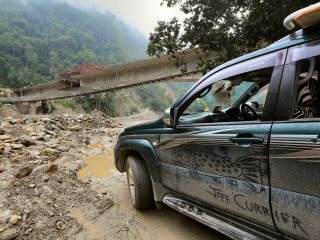 Our hour long drive from Manas headquarters to our put-in was hampered by a landslide. The slide occurred about three days ago and there was no way through. Our only route to the put-in now was a three hour (ha ha ha!) detour through jungle roads that have not been navigated in years.
Our hour long drive from Manas headquarters to our put-in was hampered by a landslide. The slide occurred about three days ago and there was no way through. Our only route to the put-in now was a three hour (ha ha ha!) detour through jungle roads that have not been navigated in years.
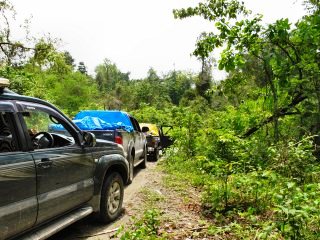 Let’s just say the detour was far from three hours. The road wasn’t a road but rather a 50 mile long trail. In some places the jungle grew across the trail so thick our crew had to clear it with machete. Then there were creeks too deep to pass a vehicle through. Here we lined the bottom with rocks so the vehicles wouldn’t sink so deep. Somehow we made it.
Let’s just say the detour was far from three hours. The road wasn’t a road but rather a 50 mile long trail. In some places the jungle grew across the trail so thick our crew had to clear it with machete. Then there were creeks too deep to pass a vehicle through. Here we lined the bottom with rocks so the vehicles wouldn’t sink so deep. Somehow we made it.
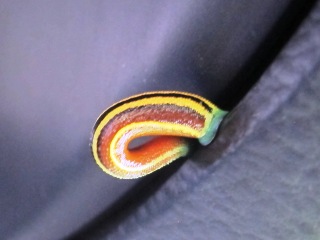 It was a sweaty grueling day of travel that instead of three hours took us nine. We picked up a few bug bites and bee stings. Luckily most of us got the land leaches off before they sucked our blood. But there were no injuries clearing the path.
It was a sweaty grueling day of travel that instead of three hours took us nine. We picked up a few bug bites and bee stings. Luckily most of us got the land leaches off before they sucked our blood. But there were no injuries clearing the path.
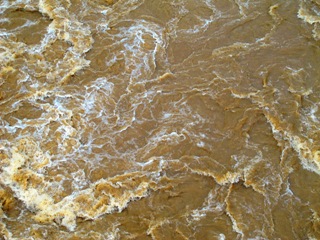 Now that we’re here we can see our river – its chocolate mud. We’ll still push off tomorrow but it looks to be a scenic float trip. Hopefully today was that one day, the one that every exploratory trip entails, the day from hell!
Now that we’re here we can see our river – its chocolate mud. We’ll still push off tomorrow but it looks to be a scenic float trip. Hopefully today was that one day, the one that every exploratory trip entails, the day from hell!
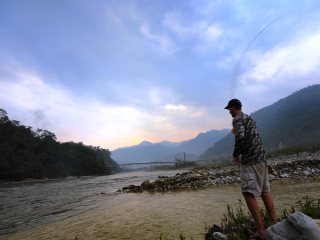
Niel Fox photo
Despite the clarity of the river, the view and sounds are absolutely spectacular. I made a cast. Camp is set. Dinner is served. And I’m signing off because I’m absolutely spent!
Tomorrow is the start of the complete unknown!

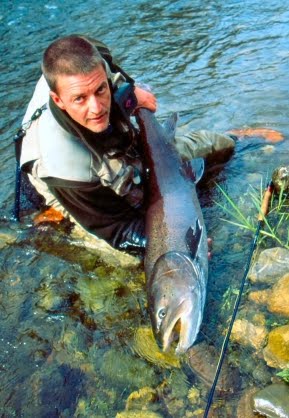
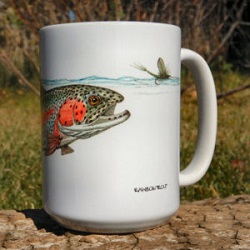







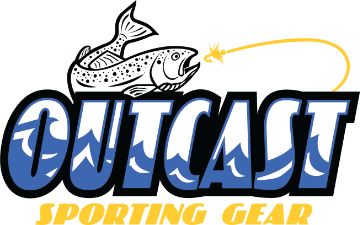



Cool drawing on the truck! Niel’s web page has come incredible pictures, you were right about high-end.